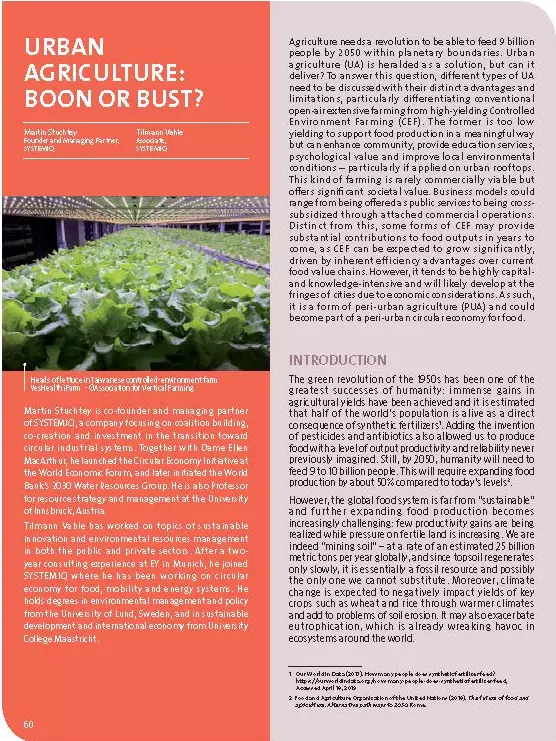Martin Stuchtey, Founder and Managing Partner, SYSTEMIQ
Tilmann Vahle, Associate, SYSTEMIQ
Agriculture needs a revolution to be able to feed 9 billion people by 2050 within planetary boundaries. Urban agriculture (UA) is heralded as a solution, but can it deliver? To answer this question, different types of UA need to be discussed with their distinct advantages and limitations, particularly differentiating conventional open-air extensive farming from high-yielding Controlled Environment Farming (CEF). The former is too low yielding to support food production in a meaningful way but can enhance community, provide education services, psychological value and improve local environmental conditions – particularly if applied on urban rooftops. This kind of farming is rarely commercially viable but offers signifi cant societal value. Business models could range from being offered as public services to being cross-subsidized through attached commercial operations.
Distinct from this, some forms of CEF may provide substantial contributions to food outputs in years to come, as CEF can be expected to grow significantly, driven by inherent efficiency advantages over current food value chains. However, it tends to be highly capital and knowledge-intensive and will likely develop at the fringes of cities due to economic considerations. As such, it is a form of peri-urban agriculture (PUA) and could become part of a peri-urban circular economy for food.



